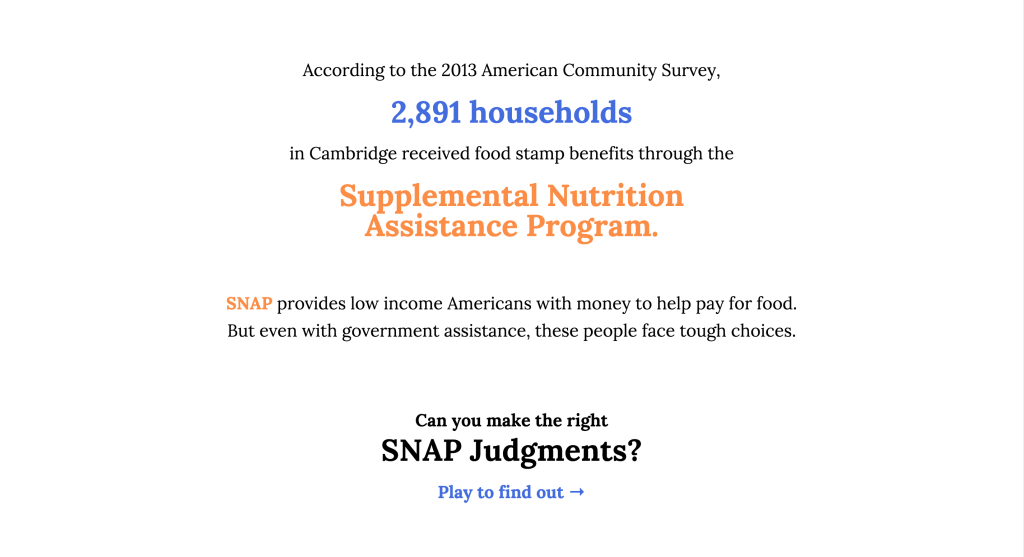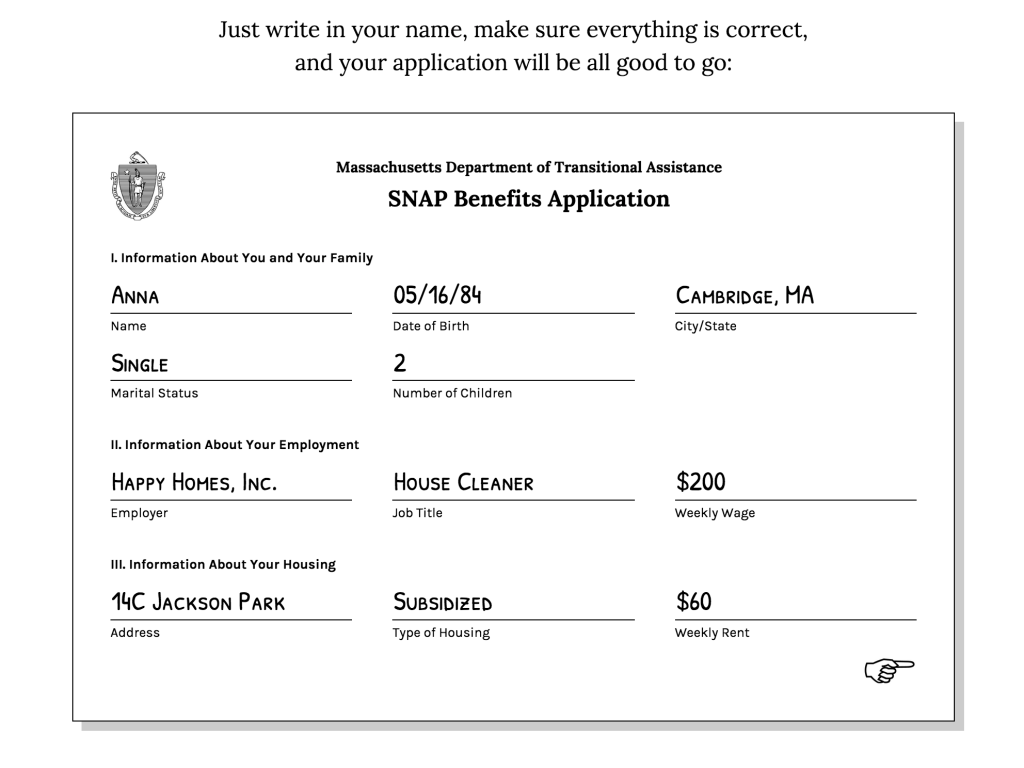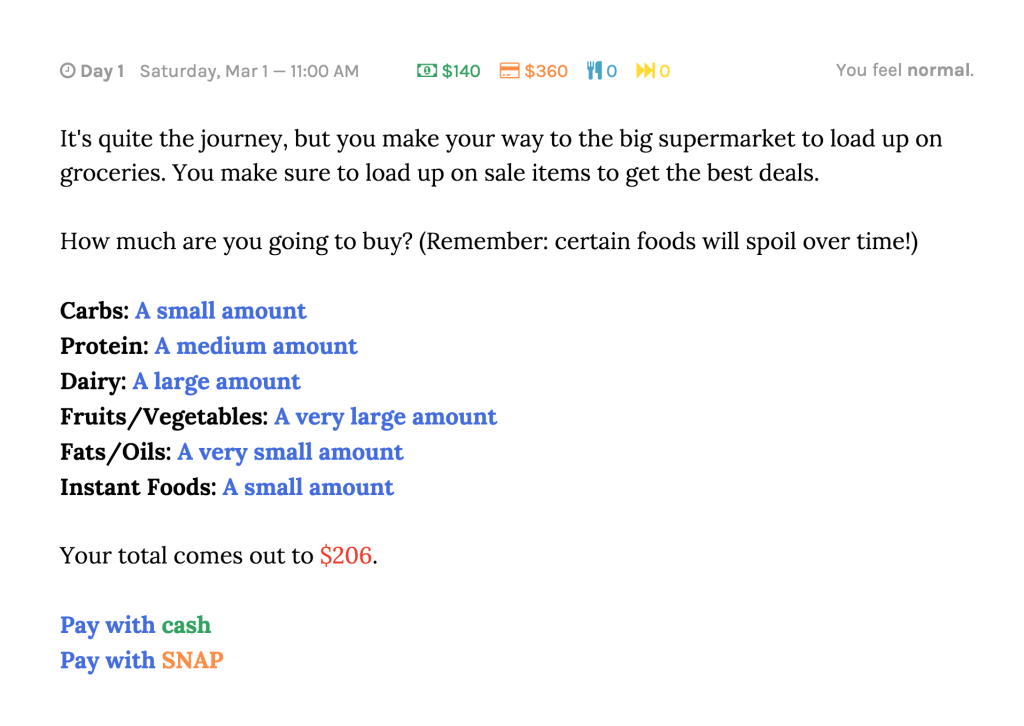Mary Delaney and Stephen Suen
SNAP Judgments is a narrative, data-driven choose-your-own-adventure game where you assume the role of a person on SNAP. The player’s objective is to make it to the end of month, trying to meet the requirements for livelihood (food, shelter, etc.) while staying within their assigned budget. From our perspective, the games goal is to give people a better understanding of the trade-offs that people to SNAP face, in the hopes of increasing empathy for SNAP participants.
To create our game, we pulled data from a number of different sources. For the food aspects of the game, we used data from the Mayo Clinic, myplate.gov, Peapod, fast food restaurants, and several research papers to get accurate information of the recommended amounts, nutritional value, and approximate costs of various types of food.
In addition to the data on food, we also used datasets on the demographics of SNAP participants to help us make the constraints that the player faces as true to life as possible. We chose a single mother of two children, the type of person who most often participates in SNAP.
For the housing component of the project, we assumed that the player character was living in subsidized Section 8 housing — as SNAP does with food, the government subsidizes housing so that low income Americans only have pay 30% of their income in rent. This was further supplemented with data from the Cambridge Housing Authority on the types of units available and where they are located, as well as information about the payment standard and utility deductions.
To prevent the food-centric aspects of the game from becoming too overwhelming, and detracting from the player’s experience, we simplified food into food groups. We simplified food into a system of units, which were normalized such that 4 units comprised a full meal for an adult and 3 comprised a full meal for a child. Using the data described above, we calculated the average nutritional value, recommended weekly amounts, and cost for each food group. A summary of the calculated data that was used directly in creating our game can be found here. When at the grocery store, players could choose how much of each food group to buy. When at home, players could choose how much food to cook, and that total amount was taken equally from each food group.
Our text-based choose-your-own-adventure game takes a player through a month in the life of a SNAP participant. To allow for decisions with longer-term impacts as well as typical daily decisions, we decided to have our game cover the course of a month, with the player experiencing selected days each week. It includes both typical decisions, which a player encounters every day, and unique choices as a result of a particular experience.
We tested the game and administered a survey to players. Playtesting allowed us to find and fix bugs in the game to improve the overall player experience. Based on our survey and talking to people who played the game, it seems as though we accomplished our goals. People agreed that they had a better understanding of SNAP, and the challenges faced by SNAP participants after playing our game. They also agreed or strongly agreed that they would be more likely to volunteer or donate to help those with food insecurity.


